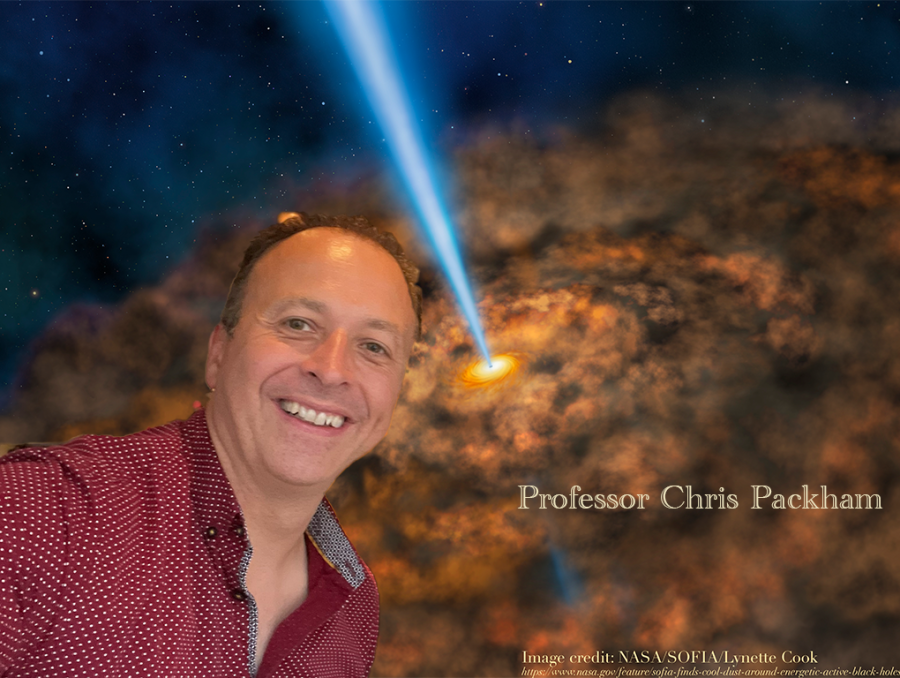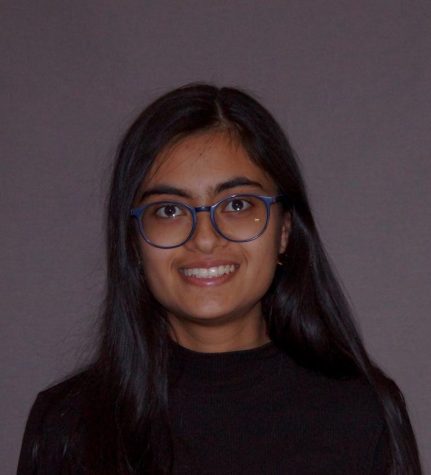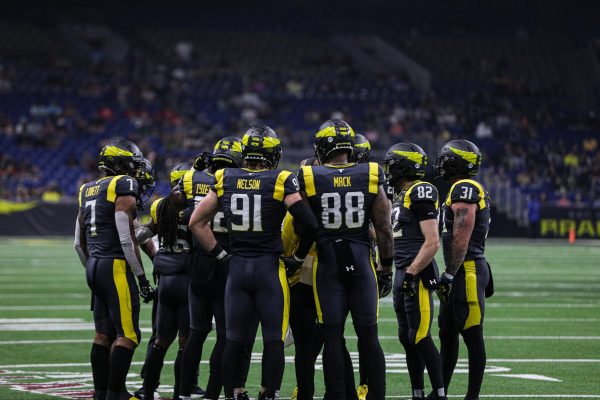James Webb Telescope data makes its way to UTSA
September 27, 2022
Several images generated by the James Webb Space Telescope (JWST) have been released over the last couple of months, drawing positive reactions from both the scientific community and the general public. The project is a collaboration between the National Aeronautics and Space Administration (NASA), the European Space Agency (ESA) and the Canadian Space Agency (CSA).
According to NASA, the telescope will serve as a “premier observatory of the next decade.” The telescope will aid in the “study [of] every phase in the history of our Universe, ranging from the first luminous glows after the Big Bang, to the formation of solar systems capable of supporting life on planets like Earth, to the evolution of our own Solar System,” according to its official website. The telescope is intended to be useful in studying the first stars and galaxies and the assembly of galaxies as well as looking “into massive clouds of dust” to areas “where stars and planetary systems are being born.” The telescope will also give insight into the solar system as well as atmospheres of extrasolar planets i.e., those that are not a part of the solar system.
One of the scientists who received these images and data from the telescope is UTSA professor Dr. Chris Packham.
Packham is part of a group of 55 scientists — known as the Galactic Activity Torus and Outflow Survey or GATOS for short — which is one of the groups that have been allotted time to use the telescope for research purposes.
According to Packham, the telescope utilizes light emitted from distant galaxies, which is captured and transmitted to NASA’s deep space network on Earth. Once the data is picked up by NASA’s deep space network, it is transmitted to Baltimore, where the telescope is operated from. The person who led the part of the group, using the telescope located in Newcastle, UK, is notified and the data is uploaded to that person’s hard drive, before making its way to UTSA’s hard drive, which is the group’s primary working space. Members of the group can then access/download the data and approach ways to work on it. As previously explained by Packham, the telescope is designed for infrared astronomy, i.e., detecting light that does not fall in the visible spectrum.
“So, what happens is [the] light leaves that galaxy about 17 million years ago, travels for 17 million light years until it hits the primary mirror, the big mirror, that hexagonal mirror of the James Webb Space Telescope, and then it bounces off of that, off of another mirror and eventually it’s captured inside of a camera, an infrared camera,” Packham said.
Packham, who got his Ph.D. in 1997, explained that while the project was just beginning to be developed at the time, the results it generated have been far beyond what he expected. Some of the first images captured by the telescope include pictures of the Carina Nebula, Stephan’s Quintet — a visual grouping of five galaxies — and the Southern Ring Nebula, while the telescope’s most recent image offered one of the most clear views of the rings of Neptune.
Some of the images that stood out to Packham include those of the Phantom Galaxy, as well as the Tarantula Nebula.
“Before the first images were released to the public … some of the insiders were in a semi public meeting … [they] said the images [were] really [going to] excite everybody,” Packham said. “One of the comments that really interested me … was that there’s no longer blank pieces of sky. Anywhere we look, there [are] galaxies. And that’s staggering. It’s just an incredible thing to go out and see just how many galaxies there are, and intellectually I could’ve guessed, but actually seeing the images means an incredible amount. It hits you emotionally and it absolutely is gonna have to change the way we do astronomy, because we’re in [such a] transformational time as we go … and use the telescope. It’s fantastic.”
Mason Leist, a student of Dr. Packham’s, who is currently working on the project, also conveyed a similar opinion of the images, while also expressing gratitude for being able to work with this groundbreaking data while pursuing a Ph.D.
“I’m incredibly fortunate with my timing, pursuing my Ph.D. and [being] given the opportunity to work with this data. I didn’t think this was gonna happen at all. That was one of the reasons why I chose San Antonio and I asked to be Dr. Packham’s student — because I was hoping for the opportunity to use this data and to be able to look at it,” Leist said.
While its image quality has exceeded expectations, the telescope’s design has also performed very well, and the telescope is expected to live for a good twenty years according to Packham.
“JWST represents the most complex robotic device ever put into space … it’s a million miles away from the Earth. It will never return to the Earth … so it was an incredible device [and] many things had to work perfectly on the first try or the telescope would have been in trouble. Happy to say that pretty much everything worked perfectly,” Packham said.
In order to use the telescope, groups will have to submit yearly research proposals which are then evaluated to determine which proposals get time to use the telescope. Packham’s group has been awarded time in cycle one and will be drafting the next set of proposals for cycle two, which is expected to happen at the end of this year/the start of next year.
“Hopefully we’ll have enough data, enough knowledge to move us into a commanding position in this area of research and then get data for cycle two and continue on,” Packham said. “That’s our goal … hopefully really understand what’s going on in the centers of these galaxies.”
To celebrate the release of images by the James Webb Telescope Project, UTSA’s Choir will be conducting a concert featuring a selection of pieces inspired by these images on Thursday, Oct. 20 at 7:30 p.m. in the UTSA Main Campus Recital Hall. Dr. Packham will be participating in a pre-concert talk about the images beginning at 7:00 p.m.
The Scobee Education Center in San Antonio College will also be hosting Dr. Packham for a special presentation about the James Webb Space Telescope from 10 a.m. to 11:30 a.m on Saturday, Oct. 29.












